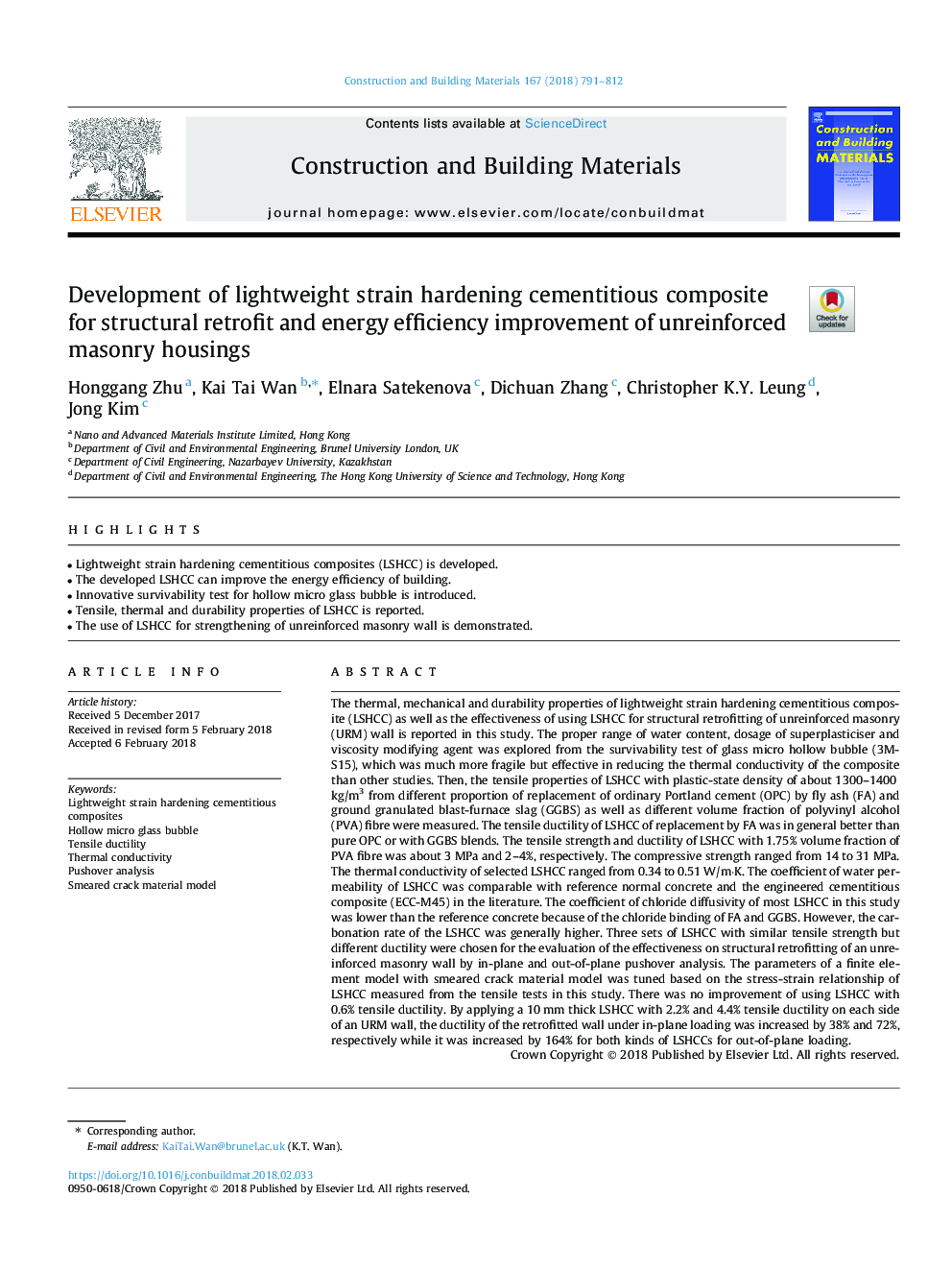| کد مقاله | کد نشریه | سال انتشار | مقاله انگلیسی | نسخه تمام متن |
|---|---|---|---|---|
| 6715413 | 1428739 | 2018 | 22 صفحه PDF | دانلود رایگان |
عنوان انگلیسی مقاله ISI
Development of lightweight strain hardening cementitious composite for structural retrofit and energy efficiency improvement of unreinforced masonry housings
ترجمه فارسی عنوان
توسعه سبک کامپوزیت سیمان مقاوم در برابر فشار برای بازسازی ساختاری و بهبود بهره وری انرژی ساختمان های مصنوعی غیر مسلح
دانلود مقاله + سفارش ترجمه
دانلود مقاله ISI انگلیسی
رایگان برای ایرانیان
کلمات کلیدی
موضوعات مرتبط
مهندسی و علوم پایه
سایر رشته های مهندسی
مهندسی عمران و سازه
چکیده انگلیسی
The thermal, mechanical and durability properties of lightweight strain hardening cementitious composite (LSHCC) as well as the effectiveness of using LSHCC for structural retrofitting of unreinforced masonry (URM) wall is reported in this study. The proper range of water content, dosage of superplasticiser and viscosity modifying agent was explored from the survivability test of glass micro hollow bubble (3M-S15), which was much more fragile but effective in reducing the thermal conductivity of the composite than other studies. Then, the tensile properties of LSHCC with plastic-state density of about 1300-1400â¯kg/m3 from different proportion of replacement of ordinary Portland cement (OPC) by fly ash (FA) and ground granulated blast-furnace slag (GGBS) as well as different volume fraction of polyvinyl alcohol (PVA) fibre were measured. The tensile ductility of LSHCC of replacement by FA was in general better than pure OPC or with GGBS blends. The tensile strength and ductility of LSHCC with 1.75% volume fraction of PVA fibre was about 3â¯MPa and 2-4%, respectively. The compressive strength ranged from 14 to 31â¯MPa. The thermal conductivity of selected LSHCC ranged from 0.34 to 0.51â¯W/m·K. The coefficient of water permeability of LSHCC was comparable with reference normal concrete and the engineered cementitious composite (ECC-M45) in the literature. The coefficient of chloride diffusivity of most LSHCC in this study was lower than the reference concrete because of the chloride binding of FA and GGBS. However, the carbonation rate of the LSHCC was generally higher. Three sets of LSHCC with similar tensile strength but different ductility were chosen for the evaluation of the effectiveness on structural retrofitting of an unreinforced masonry wall by in-plane and out-of-plane pushover analysis. The parameters of a finite element model with smeared crack material model was tuned based on the stress-strain relationship of LSHCC measured from the tensile tests in this study. There was no improvement of using LSHCC with 0.6% tensile ductility. By applying a 10â¯mm thick LSHCC with 2.2% and 4.4% tensile ductility on each side of an URM wall, the ductility of the retrofitted wall under in-plane loading was increased by 38% and 72%, respectively while it was increased by 164% for both kinds of LSHCCs for out-of-plane loading.
ناشر
Database: Elsevier - ScienceDirect (ساینس دایرکت)
Journal: Construction and Building Materials - Volume 167, 10 April 2018, Pages 791-812
Journal: Construction and Building Materials - Volume 167, 10 April 2018, Pages 791-812
نویسندگان
Honggang Zhu, Kai Tai Wan, Elnara Satekenova, Dichuan Zhang, Christopher K.Y. Leung, Jong Kim,
